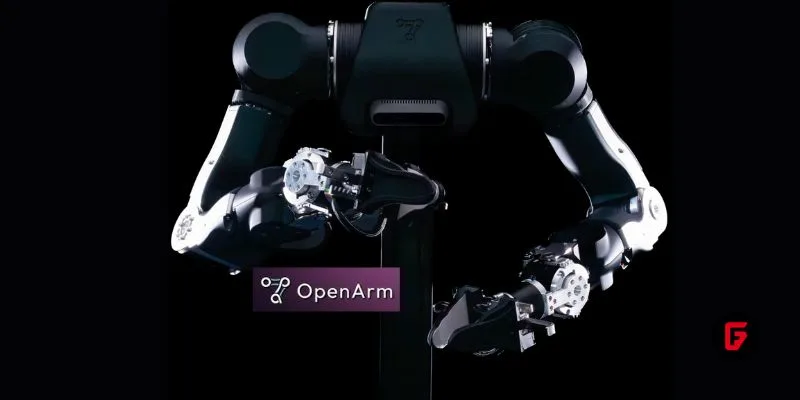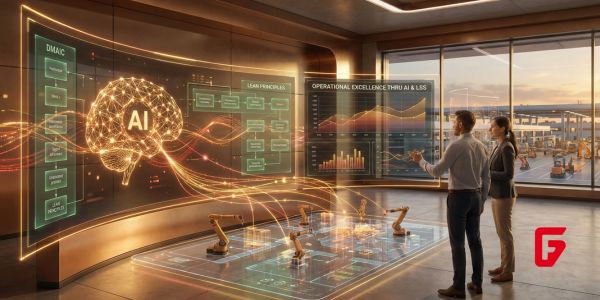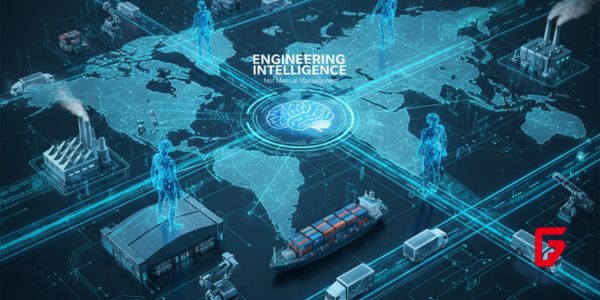OpenArm 01 is a fully open-source, 7-degree-of-freedom humanoid arm, engineered for physical AI research and contact-rich environments.
It features high backdrivability and compliance, enabling safe, versatile human-robot interaction and bimanual manipulation.
All hardware, CAD designs, firmware, and control code are free to access—inviting global collaboration, customization, and accelerated robotics research.
The platform is part of a broader push to scale assistive humanoid robotics for homes, service industries, and care settings, advancing real-world applications rapidly.

Unlike proprietary robotic solutions, open-source robotics puts power directly in the hands of researchers, engineers, and enthusiasts, removing barriers like high cost and restrictive licensing. OpenArm 01’s open approach means that:
Anybody can download, build, and modify the robot—from startups to university labs.
Customization is straightforward: The modular design and accessible parts list (sheet metal, CNC machining, open-source firmware) suit a wide spectrum of research and practical applications.
Community-driven development accelerates progress: Bug fixes, upgrades, and feature requests can flow rapidly through global collaboration.
OpenArm 01 is designed for physical AI—meaning it’s not just for simulation, but for operating and learning directly in the real world. Here’s what sets it apart:
7 Degrees of Freedom (DOF): Mimics human arm movements for natural, complex tasks.
High backdrivability and compliance: Let the arm safely interact with unpredictable environments and people, a must for assistive and collaborative robots.
CAN-FD Control: Real-time, precise motion control is ensured for delicate manipulation in research and industry contexts.
Open-Source Stack: Includes hardware designs, motor control firmware, ROS2 software, and simulation support (MuJoCo, MoveIt, Isaac Sim), making prototyping, testing, and large-scale deployments simpler.
Accessible Bill of Materials: Components are easily sourced and assembled, with step-by-step documentation and community support.
OpenArm 01’s robust, adaptable framework paves the way for a variety of frontier applications:
Research: Data collection for AI/ML, teleoperation, imitation learning, force feedback haptics, and more.
Healthcare and Assistive Robotics: Building safe arms for personal care, therapy, or assistance in homes and clinics.
Education: Affordable entry-point for hands-on robotics in engineering programs.
Industrial and Service Robotics: Enhancing automation with adaptable manipulation tasks in manufacturing and logistics.
Download and build: Grab all hardware and software from official sources—no paywall, no locked files.
Join the community: Collaborate, seek guidance, share results, and contribute upgrades (visit Discord, GitHub, or the main OpenArm website).
Prototype new applications: Use OpenArm’s flexible base as a springboard for research or innovative startups—your tweaks and insights can shape the global roadmap.

Editorial Team
futureTEKnow is a leading source for Technology, Startups, and Business News, spotlighting the most innovative companies and breakthrough trends in emerging tech sectors like Artificial Intelligence (AI), Robotics, and the Space Industry.
Discover the companies and startups shaping tomorrow — explore the future of technology today.

This article explores 10 AI-driven supply chain optimization companies to watch in 2026, highlighting how their platforms improve forecasting, logistics,

AWS frontier agents introduce a new era of autonomous AI coders that can build, secure, and run applications for days

Explore the cutting-edge ways AI is enhancing Lean Six Sigma, from real-time process insights to predictive controls, ushering in a

Facing supply chain challenges in 2025? High-performing teams leverage AI for risk management, demand forecasting, supplier analytics, and end-to-end visibility

Craft an AI-powered supply chain Center of Excellence that unifies control tower visibility, analytics, and inventory optimization into one strategic

Supply chain leadership is being redefined by AI, intelligent automation, and agentic decision-making, demanding leaders who can engineer end-to-end intelligence

WisdomAI has closed a $50M Series A led by Kleiner Perkins and Nvidia’s NVentures to turn fragmented enterprise data into

Bridgit Mendler’s Northwood Space is pioneering mass-produced ground stations, enabling scalable, high-speed connectivity for the new era of satellite networks

SpaceX aims to nearly double launches from Vandenberg in 2025, facing support from federal agencies but strong objections from the

Traditional Medicare will pilot AI-assisted prior authorization in 2026 across six states, focusing on high-risk outpatient services. Clinicians retain final

OpenArt’s new “one-click story” compresses scripting, visuals, and edits into ready-to-post short videos—fueling viral growth and a fresh IP debate.

OpenAI’s o3 swept the Kaggle AI chess tournament, defeating xAI’s Grok 4–0. The victory fueled the intense rivalry between Altman
To provide the best experiences, we use technologies like cookies to store and/or access device information. Consenting to these technologies will allow us to process data such as browsing behavior or unique IDs on this site. Thanks for visiting futureTEKnow.